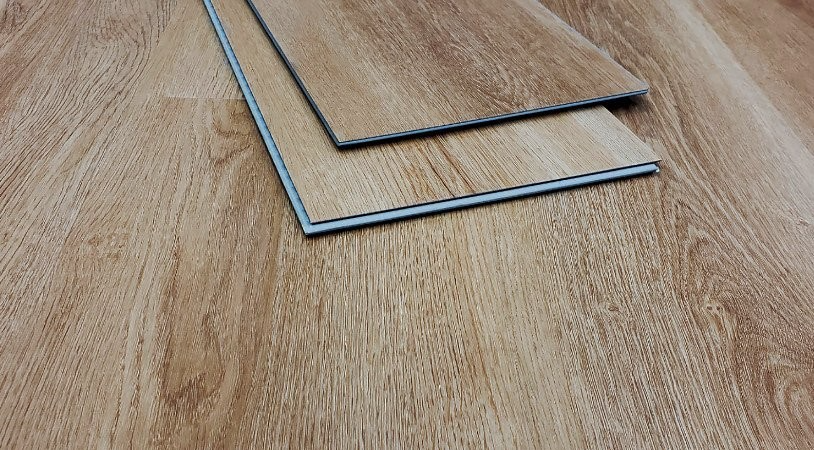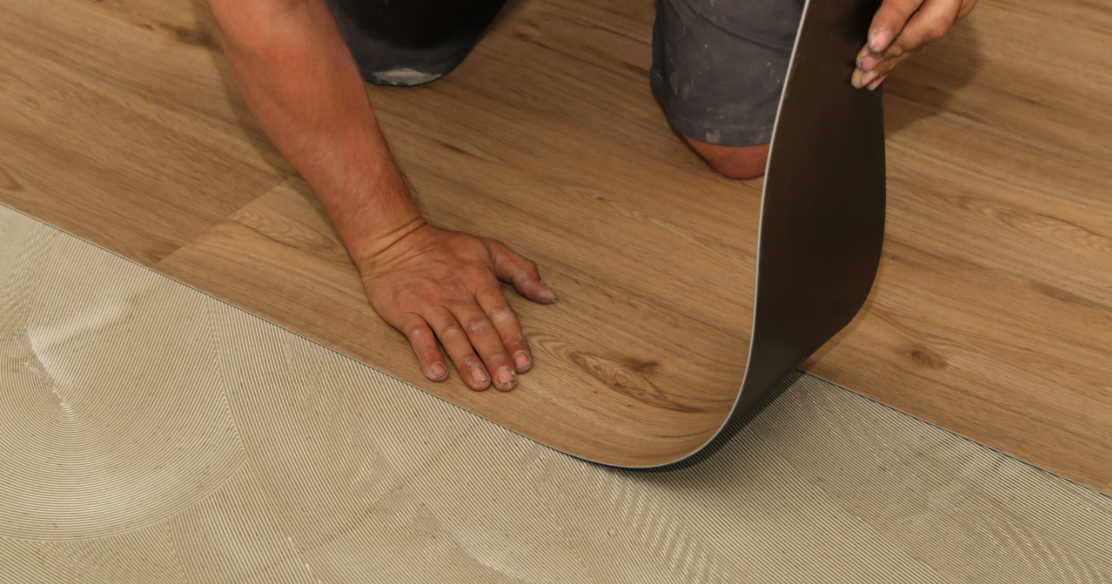2025 LVP Flooring Types Trends: SPC, WPC, or LVT Explained
The global Luxury Vinyl Plank (LVP) Flooring market continues to expand rapidly. In 2024, the market was valued at $25.37 billion, and it’s expected to grow at a CAGR of 5.5% through 2030. Among all LVP categories, SPC, LVT, and WPC remain the top three choices, each evolving with new features, applications, and performance improvements in 2025.
This guide offers a comprehensive look at the latest LVP flooring types, usage preferences, and what to expect in the year ahead.
SPC, LVT, and WPC Market Share and Growth Trends
I have been following the flooring industry, and the growth of LVP flooring is like a huge wave changing the market. This boom is more than just data. It shows that millions of homeowners have found what I consider the perfect blend of luxury and affordability.
Based on my experience, this growth is driven by three main factors. New home construction is on the rise across America. Families need durable flooring that is both affordable and can handle everyday life. Also, the recent manufacturing improvements are, in my opinion, amazing.
I call the LVT segment the “Swiss Army knife” of flooring because it includes flexible LVT, SPC, and WPC. Its growth seems unstoppable. I’m watching the market jump from $26.01 billion in 2024 to an expected $29.68 billion in 2025. As an industry analyst, I find that 14.1% annual growth exciting.
I am also looking toward 2029. The market is expected to reach an estimated $48.92 billion. To me, it feels like watching a small stream become a powerful river.
One statistic is particularly striking to me. In 2024, I noted that 30% of homeowners chose LVP flooring for their renovations. This is an increase from 28% in 2023. It seems more people are discovering this great flooring option that I have supported for years.
Sales Trends by Flooring Type (2024–2025)
Recent data shows varying growth momentum among SPC, LVT, and WPC flooring types based on their performance characteristics and market adoption:
| Type | 2024 Global Market Share | 2025 Growth Trend | Key Markets |
|---|---|---|---|
| SPC | ~46% of rigid core LVP sales | ↑ Fastest growing | North America, Middle East, Southeast Asia |
| LVT (Flexible) | ~32% of LVP market | → Stable with steady retail demand | Europe, North America, emerging retail |
| WPC | ~22% of rigid core LVP sales | ↑ Moderate growth, mostly residential | USA, Canada, Australia |
SPC flooring’s running the game in 2025 — no question. It’s tough, waterproof, and doesn’t flinch under pressure, which makes it a go-to for heavy-use areas like stores, offices, or anywhere that sees a lot of foot traffic. Both booming markets and big players are jumping on it.
LVT’s still holding it down, especially in retail and home reno. Why? It’s budget-friendly, looks real nice, and gives you way more design freedom — a solid pick for the price.
WPC – Still in the mix, mostly in spaces where comfort counts — bedrooms, chill zones, that kind of vibe. It’s big in North America, but let’s be real: thinner, tougher SPC is starting to steal the spotlight in newer markets.
SPC vs. LVT vs. WPC: A Deep Dive into 2025’s Core LVP Options
When you’re picking out Luxury Vinyl Plank flooring, you gotta know what’s up with SPC, LVT, and WPC. They’re all in the same crew but built different, with their own perks that work better in some spots than others. In 2025, tech’s stepped up and buyers are way more picky, so choosing the right one? That’s straight-up important — especially if you’re running a wholesale gig, building projects, or repping a brand worldwide.
SPC Flooring (Stone Polymer Composite) The Most Durable LVP Type in 2025
Core Material: Calcium carbonate (limestone), polyvinyl chloride, and stabilizers
SPC’s the toughest kid on the block when it comes to LVP flooring types. It’s super rigid and built to take a beating—perfect for spots that see a lot of action. Its dense core fights off dents, moisture, and crazy temperature swings like a champ. That’s why SPC stays solid and steady, even under blazing sun or nonstop foot traffic.SPC is widely favored, so choosing the right SPC flooring manufacturer is crucial for durability.
Key Benefits:
100% waterproof—excellent for wet areas like bathrooms and kitchens
Dent-resistant surface—better than WPC and LVT when it comes to impact
Click-lock installation—quick and tool-friendly, suitable for both residential and commercial projects
Minimal expansion/contraction—performs well in climates with large temperature swings
Typical Uses:
SPC is favored in commercial interiors, such as offices, clinics, schools, and shopping centers, where durability and easy maintenance are top priorities. It’s also widely used in rental properties and basements, where moisture and floor condition issues are common.
Notable 2025 Trends:
Based on my time in the flooring industry, I’ve seen a huge rise in SPC planks that have attached underlay. This is a big change for flooring. I’ve noticed these planks sell very well in the Middle East and Southeast Asia. In those places, high heat and moisture often make older types of flooring warp and fail.Many developers choose a wholesale flooring supplier for competitive pricing on large volume orders
I am excited by how OEM flooring manufacturers are creating wear layers that are very thin yet durable. These layers are only 0.3mm to 0.7mm thick. They feel smooth to the touch but are strong enough to act like armor. I have felt these surfaces myself and am impressed. It is remarkable that something so thin can handle constant foot traffic, furniture being moved, and everyday spills.
Flexible LVT Flooring (Luxury Vinyl Tile/Plank) Cost-Effective and Design-Friendly
Core Material: Multiple layers of flexible PVC, print film, and wear layer
Flexible LVT is the most versatile and design-rich option among the three. While it lacks the rigidity of SPC and WPC, it compensates with cost efficiency, lightweight formats, and superior design customization through high-resolution printing.
Key Benefits:
Design flexibility—supports a wide range of styles, from wood to stone to abstract
Lower cost—ideal for value-focused residential or light commercial projects
Glue-down and loose-lay options—suitable for spaces requiring custom layouts or ease of replacement
Realistic visuals—thanks to advances in digital printing and embossing
Typical Uses:
LVT is a strong candidate for retail shops, hotel rooms, condominiums, and multi-family housing where aesthetics and budget are balanced. Its softness underfoot and sound absorption also make it attractive in hospitality interiors.
Notable 2025 Trends:
LVT is now available in modular tile sizes, ideal for patterned layouts
Improved scratch resistance and anti-slip coatings are making it more viable for commercial specs
Popular in Europe and North America for quick renovation projects
WPC Flooring (Wood Polymer Composite) The Most Comfortable LVP Flooring Option
Core Material: PVC blended with wood fiber or bamboo powder and foaming agents
WPC was initially developed as a more comfortable and sound-absorbing alternative to rigid LVP formats. It offers the warmth and softness that traditional SPC lacks, making it more appealing for residential applications, especially in bedrooms or upper-floor installations.
Key Benefits:
Cushioned feel underfoot—ideal for spaces where comfort is a concern
Built-in acoustic performance—dampens footfall and echoes
Thermal insulation—performs well in cooler climates or upper-level rooms
Thicker format—usually 6mm to 8mm, improving overall walkability
Typical Uses:
WPC is commonly specified for single-family homes, luxury apartments, assisted living facilities, and home offices. It’s also used in premium retail spaces where a higher-end feel is desired. Custom orders are easier with a professional custom flooring OEM that handles embossing and color matching.
Notable 2025 Trends:
WPC is regaining attention due to eco-friendly innovations in core composition
Now being used more in mixed WPC-SPC hybrid formats to combine comfort with strength
Manufacturers are adding click-and-glue dual installation systems
SPC vs. LVT vs. WPC: Which LVP Type Should You Choose in 2025?
From a manufacturing perspective, both SPC and WPC are classified as rigid core flooring, a sub-category of LVT designed to enhance strength and ease of installation. Rigid core LVP is forecasted to make up over 65% of total LVP sales by 2027, with SPC leading due to its robust price-to-performance ratio.
The decision between SPC and WPC often comes down to a tradeoff:
Choose SPC when durability and cost-efficiency are the top priorities
Opt for WPC when comfort and acoustic performance are more important
Use flexible LVT for design-heavy spaces with moderate traffic and limited installation budgets
LVP Flooring Type Comparison Table (SPC, LVT, WPC)
| Flooring Type | Core Material | Key Benefits | Typical Uses | Notable Features |
|---|---|---|---|---|
| SPC | Stone Polymer Composite | Top water resistance, rigid, dent resistant | High-traffic, commercial, bathrooms | Click-lock installation; great for uneven subfloors |
| LVT | Polyvinyl Chloride (PVC) | Versatile designs, cost-effective, realistic | Residential, retail, light commercial | Available flexible or rigid; digital print realism |
| WPC | Wood Polymer Composite | Comfortable, warm, good sound absorption | Residential, bedrooms, living spaces | Thicker, softer, better thermal insulation |
Based on my experience, both SPC & WPC are types of rigid core LVT. Each one has its own unique benefits.
LVT is flexible for many uses. Thanks to new technology, you can find it in many realistic finishes.
Market Drivers Behind the Rise of LVP Flooring Types?
From what I’ve seen, new technology makes LVP look almost identical to real wood or stone.
People are choosing LVP and LVT for their great design, comfort, and strength. It’s no longer just a choice for a small budget.
In 2025, I see some features being very popular. These include eco-friendly materials, better digital printing, and fast installation methods.
For large-scale commercial jobs, partnering with a reliable project flooring supplier is essential.
Expert Opinion:
“I’ve been in the flooring business for over 15 years. From my experience, the trends in 2025 are changing how people choose floors. Both homeowners and contractors are making decisions differently. The move to green materials is not just a marketing trick. It comes from a real need from homeowners. They want products that are good for the earth and also perform well. I am most excited about new digital printing technology. It creates such a realistic look. Even experienced installers have trouble telling high-quality vinyl from real hardwood at first. This improvement in tech, along with quicker installation like click-lock systems, means more people can afford excellent flooring.”
———— Jason Liu, Head of LVP R&D at Baier Flooring (China HQ), with 12+ years in global OEM flooring solutions


